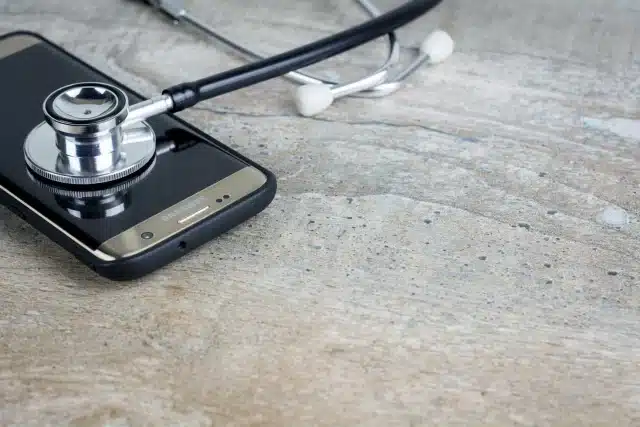There has been a significant transformation in the mental health crisis in the United States in recent years. An American Psychological Association survey revealed a significant increase in reported mental illnesses among adults aged 35-44, rising from 31% in 2019 to 45%.
Despite historical reluctance to seek help, attitudes are changing. This is reflected in the percentage of American adults receiving treatment for mental health and substance use disorders. The numbers increased from 19.2% in 2019 to 21.6% in 2021, indicating a reduction in associated stigma.
Telehealth technology has been important in facilitating this transition, hence enhancing the accessibility of mental health care. While patients increasingly prefer virtual care, providers face unique challenges in delivering remote services effectively.
For mental health professionals offering remote care, implementing targeted strategies is essential to ensure high-quality service and maximize patient satisfaction. This article explores key measures to optimize remote mental health care delivery.
Implementing Robust Technological Infrastructure
Research indicates that teletherapy is poised to remain a permanent fixture in mental health care delivery. To distinguish your mental health practice, it’s crucial to deploy a comprehensive virtual health platform.
The key to patient satisfaction lies in the seamless integration of technology into your service delivery model.
Essential components of an effective telehealth system include a user-centric video conferencing solution and a secure messaging platform. Both are designed to facilitate smooth patient-therapist interactions. When selecting and implementing these technologies, prioritize simplicity and accessibility to minimize patient stress.
Additionally, provide patients with clear, concise instructions on accessing telehealth sessions and supplementary materials. A reliable and intuitive remote patient monitoring framework might be a game-changer.
Intuitiveness enhances patient satisfaction and instills confidence in the effectiveness of remote mental health services. By focusing on these aspects, mental health providers can create a more engaging and supportive virtual care environment.
For healthcare providers, maintaining high levels of patient satisfaction remains a critical objective, regardless of the mode of service delivery—be it in-person or virtual.
While patients increasingly favor remote care options, healthcare professionals may encounter unique challenges in delivering services through digital mediums. To address these challenges and ensure optimal care quality in remote mental health services, providers must implement targeted strategies and best practices.
Establishing a Secure Virtual Environment
While technological advancements facilitate improved patient care, individuals grappling with mental health issues may harbor concerns regarding privacy in digital settings.
Virtual conferencing solutions, such as Zoom and Microsoft Teams, enable advanced discussions and thorough progress sharing. As per Forbes, these solutions enable communication and collaboration across several locations, guaranteeing that there are no interruptions.
In addition to visual connectivity, these products offer a variety of collaboration functions. Participants can display their displays, make notes on documents in real-time, and split into smaller, specialized discussion groups.
However, these electronic communication systems inherently present security vulnerabilities. Furthermore, the potential for data breaches and illegal access to patient records by malevolent individuals continues to be a major worry.
To tackle these difficulties, mental health professionals need to adopt comprehensive security processes that go beyond normal precautions. The deployment of end-to-end encrypted communication platforms and secure messaging systems serves as a foundational step for remote patient monitoring software.
Additionally, the implementation of multi-factor authentication and password-protected virtual waiting rooms can significantly mitigate the risk of unauthorized access.
It is equally crucial to transparently communicate these security measures to patients. By elucidating the robust safeguards in place, providers can alleviate patient apprehensions regarding the confidentiality of their remote sessions. This proactive strategy improves data security and cultivates confidence in the virtual healthcare setting.
Optimizing Accessibility through Adaptive Scheduling Protocols
In mental health care, accessibility is a critical determinant of patient satisfaction. The inherent unpredictability of mental health crises necessitates prompt access to professional support.
Virtual care modalities offer a significant advantage in this regard, mitigating barriers associated with traditional in-person consultations and facilitating timely interventions.
To maximize the benefits of remote mental health services, providers must implement adaptive scheduling protocols. This includes extending service availability beyond conventional hours to encompass evenings, weekends, and emergency slots.
Such flexibility in scheduling accommodates individuals with demanding schedules or those experiencing acute psychological distress. This enhances the overall accessibility of mental health support.
The implementation of these scheduling strategies augments the convenience factor inherent to remote mental health care. However, it also contributes to positive patient outcomes. By aligning service availability with patient needs, providers can significantly enhance the efficacy and perceived value of their telemental health offerings.
Implementing Individualized Care Protocols
The proliferation of digital healthcare technologies has increased the availability of patient-specific data, enabling a more tailored approach to mental health treatment.
According to Wired, this data-rich environment facilitates the development of highly personalized care strategies. These bespoke treatment protocols can be crafted to align with individual patient characteristics. These include personal preferences, cultural nuances, and the severity of their mental health condition.
The integration of remote patient monitoring (RPM) systems extends the scope of care beyond scheduled sessions. These advanced systems enable real-time tracking of vital parameters, allowing for proactive interventions when clinically indicated. For instance, early detection of anxiety episode precursors can prompt timely therapeutic interventions.
Experts at CoachCare advocate for the utilization of connected devices to capture granular medical data and generate targeted recommendations for addressing anomalies. This data-driven, personalized approach not only fosters patient trust but also demonstrably improves clinical outcomes in digital mental health care delivery.
FAQs
Q1: How can mental health providers ensure patient privacy in remote care?
A: Providers should implement end-to-end encrypted communication platforms, secure messaging systems, and multi-factor authentication. Utilizing password-protected virtual waiting rooms and transparently communicating these security measures to patients can also enhance confidentiality and trust in remote mental health care.
Q2: What are the key components of an effective telehealth system for mental health care?
A: Essential components include a user-friendly video conferencing solution, a secure messaging platform, and remote patient monitoring capabilities. These should be integrated seamlessly, prioritizing simplicity and accessibility to minimize patient stress and facilitate smooth patient-therapist interactions.
Q3: How can mental health providers improve accessibility in remote care?
A: Providers can implement adaptive scheduling protocols, offering extended service hours, including evenings, weekends, and emergency slots. This flexibility accommodates individuals with demanding schedules or those experiencing acute psychological distress, enhancing the overall accessibility of mental health support.
The evolution of remote mental health care represents a paradigm shift in healthcare delivery. By embracing technological advancements, prioritizing security, and implementing personalized care strategies, providers can overcome the challenges of virtual care.
This holistic approach enhances patient satisfaction and expands access to critical mental health services. The integration of innovative technologies and patient-centric practices will be crucial in shaping the future of mental health care.

Speaks from heart, always too passionate and driven by emotions. Spins the words with kindness & sharpness, intriguing your ever-inscrutable minds.




